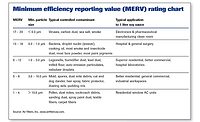
Richard Stier
Develop a plan
This is more than putting words on paper. Map out how your plant will react to a variety of disasters: hurricanes, earthquakes, tornadoes, fires, chemical spills/leaks, terrorism or other potential problems. At the very least, you need an evacuation plan to get workers to a safe location. Once the plan is developed, practice it. Get the whole workforce involved; make them aware of the plan and rehearse it with them.
Maintain your business
How will you respond if you are unable to conduct business? Small businesses and those that manufacture specialty items can be hurt by extended downtime. Some operators have backup product that can be held in inventory for extended periods of time. Consider what you would need to maintain or re-start your business.Protect your products
You need to ensure that your products, including ingredients and packaging materials are protected. If you are building or renovating a plant, your plans should include ways to protect plants and warehouse facilities from disasters. If your facility is located in a hurricane prone area, can it withstand gale force winds or torrential rain? I have worked with several warehouse operators on salvage operations resulting from the collapse of roofs with too much water. These roofs weren't poorly designed. The operator failed to properly keep the drains clean and the result was too much accumulated water. Be sure to adequately maintain the building.Learn how to recover
If there is a disaster and your products are compromised, salvage may not be possible. For example, bulk grains or nuts that have been soaked with flood or rainwater are potentially adulterated by water and mold or mycotoxin growth. The US FDA offers guidelines for disposal of contaminated food. Among them are these questions:
- What is (are) the potential contaminants?
- How is the contaminated food categorized? That is, is the product now hazardous waste? Radiological waste? Is it something that requires special handling?
- How much food is to be disposed?
- What are the logistics for moving the compromised products to a disposal site?
- Are permits required for disposal?
- Are workers potentially at risk?
We all hope to never address such questions. But if you learned one thing from Katrina, let it be this: Thinking it won't happen to you won't make it so.





